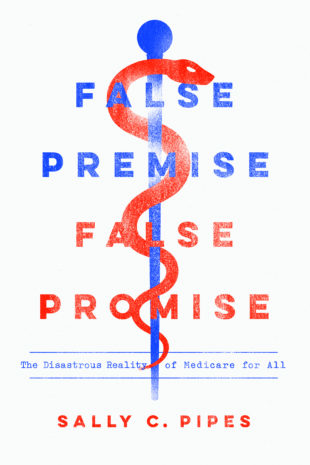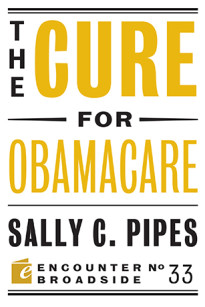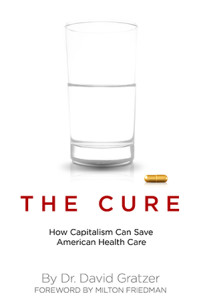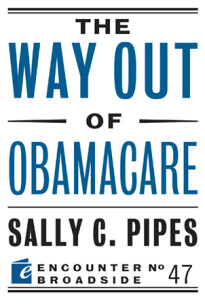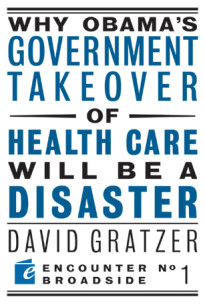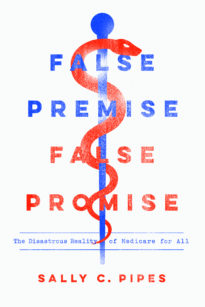Introduction: “Medicare for All” Mania Sweeps the Political Left
The year is 2016. Senator Bernie Sanders has just lost the Democratic presidential primary to Hillary Clinton. He ran a fierce campaign, garnering more than 13 million votes—43 percent of the total cast.
Sanders’s long-term political legacy won’t be his second-place finish in 2016. It will be his introduction of Medicare for All to the masses. “It is time for our country to join every other major industrialized nation on earth and guarantee health care to all citizens as a right, not a privilege,” Sanders said upon releasing his vision for socialized medicine in the United States.
For decades, Sanders has been advocating for a government health care monopoly. He envisioned a world where the federal government was the only provider of health coverage in the United States—where it was the “single payer” for health care.
Sanders had long been dismissed as an extremist, a self-proclaimed Democratic Socialist who honeymooned in the Soviet Union. But after 2016, he couldn’t be ignored any longer. Millions of people had thrown in their lot with a candidate who promised Medicare for All.
Perhaps that shouldn’t have come as a surprise. Support for a single-payer system has grown steadily over the past two decades. Fifty-one percent of Americans favored single-payer health care in 2019, compared to just 40 percent in 2000, according to the Kaiser Family Foundation. As of the summer of 2019, 72 percent of Democrats were on board with Medicare for All.
Democrats have scrambled to meet Sanders on their party’s far left flank. When he introduced bills to establish Medicare for All in 2017 and then again in 2019, his legislation attracted more than a dozen Democratic cosponsors, including a host of presidential hopefuls. Compare that to his earlier bids for single-payer legislation in the Senate—in 2009, 2011, and 2013—when he picked up nary a cosponsor.
How did Medicare for All move from a fringe policy proposal to something that ostensibly commands the support of the majority of the American public? Like many radical political shifts, it’s the product of years of dissatisfaction with the status quo.
A January 2019 Gallup poll found that 7 in 10 Americans believed the current health care system was “in a state of crisis” or had “major problems.” That level of dissatisfaction has remained relatively constant since 1994, when Gallup first asked Americans how they felt about their country’s health care system.
By and large, it’s the cost of care, not the quality, that’s making Americans unhappy. In November 2018, more than half of Americans told Gallup they were satisfied with the quality of care they received. Almost 80 percent said they were dissatisfied with its cost.
It’s easy to understand why. Health costs have been rising inexorably, much faster than the price of just about everything else in the economy. Between 2008 and 2018, the cost of health care in the United States increased nearly 22 percent. That’s four percentage points higher than the overall inflation rate.
Insurance premiums have grown even more. The average premium for employer-sponsored family coverage increased 55 percent between 2008 and 2018, to just over $19,000. Nominal average wages have grown more slowly. So health insurance costs are eating up a bigger and bigger share of Americans’ paychecks.
The Affordable Care Act, signed into law by President Barack Obama on March 23, 2010, was supposed to address these trends. Its architects promised that its combination of mandates and subsidies would lower the cost of care and ensure no American went without coverage.
On both counts, the law, nicknamed Obamacare, failed. Average individual market premiums doubled between 2013—the year before most of Obamacare took effect—and 2017, according to the Department of Health and Human Services.
About 20 million people gained insurance coverage through the Affordable Care Act. But most of them ended up on Medicaid. By 2018, around 27.5 million people were uninsured, according to the Census Bureau. In 2019, 11.4 million people had coverage on either a state exchange or the federal government’s HealthCare.gov. That year, 87 percent of those who shopped on the federal exchange received subsidies to purchase coverage.
Obamacare’s failure has provided an opening for politicians like Senator Sanders to call for even more government intervention in the health care marketplace. After all, Obamacare left private insurers intact. It gave them tens of billions of dollars in taxpayer-funded subsidies in hopes of making coverage more affordable. Yet insurance became even more expensive. Millions remain uninsured.
Sanders and company have framed this state of affairs as a failure of the private market—a failure only government can address. To make their case, Medicare for All’s partisans point to the likes of Canada and the United Kingdom, whose government-run health care systems have furnished all citizens with insurance for a much smaller share of the national income.
There’s just one problem. Government-run, single-payer health care is a catastrophe for the people forced to live under it. This book explains how and why.
In the following chapters, I’ll tackle the big questions, like whether there is a “right” to health care. I’ll survey the various single-payer proposals floating through the halls of Congress and detail how single-payer systems took root in Canada and the United Kingdom. I’ll also lay out the horrors of those systems—from the unimaginably long waits for care and the lack of access to cutting-edge treatment to the eye-popping costs of “free” care and the subpar outcomes they deliver for patients.
Along the way, I’ll introduce some of the victims of these systems: mothers denied lifesaving drugs for their children, young women told they aren’t sick enough to qualify for care, and retirees heading abroad after being refused care at home, among others. Their stories should serve as cautionary tales for anyone who thinks a single-payer system is a good fit for the American people.
I’ll then offer a health care reform plan of my own, one that will make affordable, quality care available to each and every American. Unlike Medicare for All, my plan doesn’t double down on a half-century’s worth of failed government overreach. Instead, it aims to unleash the market forces that have yielded higher quality, lower cost, and better value in every other sector of our economy. Only then will health care truly be affordable and accessible to all.
